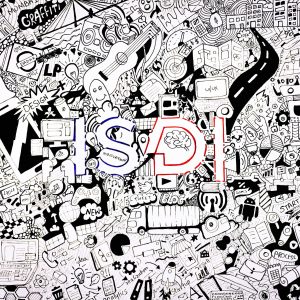Everything You Need To Know About Textile Designing
Did you know microfibre is 100x finer than human hair? Isn’t that intriguing?
Can you think about the number of fabrics and textiles that are all over you and around you. There is a lot of it around us all the time. That vintage sari in your mom’s closet or the kurta that you bought for yourself on Diwali as a gift. There are sofas and cushions, carpets and curtains, as well as almost everything else in the room. Every single thing, from spacesuits to aeroplane seats, are made out of materials like cotton, wool, and polyester.
The most essential factor about fabric is that it protects and shelters us from the weather. Most people don’t give much thought to who makes it or how it’s made. But since you are here, you’re definitely the one who’s interested, so let’s give you all you need right away!

What is textile designing?
Textile design is a broad term that covers a lot of different things about how fabrics are made.
They are made by knitting, weaving, or arranging fibres with nonwoven techniques like felting, which is how things are made. It also refers to designing for the surface of fabrics through methods like printing, resist-dyeing, and discharge printing. It is a common practice to interlace warp and weft yarns in woven fabrics to reflect the fabric’s design.
How are fabrics printed?

It is possible to print designs onto woven or knit fabrics. The surface and structural design of fabric are both parts of textile design.
The process of coming up with an eye-catching design is more difficult and time-consuming. One must be well-versed in the many facets of textile production, as well as market demands and current trends. Textile design requires a combination of creative design, colour blending, and repeating patterns.
The process of printing is further categorised into different methods, namely Analogue and Digital Fabric printing methods.
In analogue method, a screen printing is involved by pressing the dye through a print screen. This operation can be either manually or by using a machine.
Digital printing method allows you to make different patterns without using the printing of a screen. The printer is able to produce virtual designs of various colours without any restrictions as compared to the former method.
A Brief History of Textile
The story of textiles in India is one of the oldest in the world.
Did you know?
Ancient Greece was so fascinated with Indian textile that cotton became a synonym for India.
Traditional Indian textiles date back to the Indus Valley Civilization, where people weaved their clothing with home-spun cotton.
It is in the Rigveda, the earliest of the Vedas, that we find the earliest references to textiles and weaving.
Both the Ramayana and the Mahabharata, two of India’s most revered epics, describe the vast array of textiles found in ancient India.
Aristocrats’ ostentatious, highly stylized attire is discussed in these epics, as is the more modest attire worn by the common people. With modern Indian textiles, the past is reflected as well as modern needs are fulfilled.
Elements of designing
The elements are the building blocks of a design. These are the basic parts of a design that can show a lot of different things. It is very important for a designer to know about design elements because they can be used in many different fields, such as interior design, fashion design, architecture, and visual arts. Line, shape, form, colour, and texture are some of the most important things in design.
Different types of textile designing
Textile designers often use things like colour and line structure in their patterns. Geometry is often used to show these types of patterns. It is used in textile design to figure out how the design elements are put together. The designs are first printed on paper and then used to weave on textiles like scarves or dresses.
Textile design can be broken down into three parts. There are:
-
Printed design:
Fabrics are arranged in printing, which is a type of textile arrangement. Various methods of fabric decoration include the use of pigment, dye, blocks, and batik, amongst others.
-
Woven Design:
A woven textile design is one that is created on the fabric by weaving the yarn into the design. Brackets are commonly used to separate the warp and weft threads.
-
Multi-mix design:
Sewing, blocking, batik, and even the weaving technique all contribute to the fabric’s texture. That is to say, the fabric produces a mixture of various designs, which is why it is referred to as “mixed media textile design.”
Textiles are used in practically every facet of modern life due to their wide range of applications. While this is just the beginning of understanding the world of fabrics and textiles there is a lot more than you can cover based on your level of interest in the subject.
How can ISDI Help:
If you are keen on taking up textile designing as a career option, we suggest you learn Strategic Design and Management to enhance your creativity and discover new opportunities!
ISDI offers various design programs such as Fashion Design, Fashion Communication and Styling, Interior Design and Strategic Design, Communication Design, Product Design, and Management. Pursuing one of the degree programs, that is, Bachelors in Design (BDes) – 4 year program or Postgraduate In Design (PGDI) – 11 months program. Either of the programs are an alternative for a career in fashion and design.
The ISDI campus is located in the business district of Mumbai, the commercial centre of India. ISDI consists of a curriculum that is based on that of the Parsons School of Design, experienced and industry-leading faculty, practical project-based training, all situated in a state-of-the-art campus. ISDI is just the right place for someone looking to start a career in design.
Design is a behavior, not a department.








